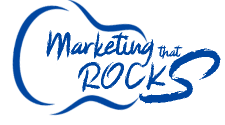A little research and observation reveal some general trends and fun predictions for marketing techniques in 2023 and beyond. However, please note that the future is uncertain and these predictions are speculative: Or, as Jim Morrison sang: “The future’s uncertain and the end is always near.”
- Personalization and hyper-targeting: Personalized marketing is becoming more and more personal and will continue to be a key focus for businesses. You may recall a ‘90’s marketing concept, “relationship marketing”, finally coming to fruition with the benefit of sophisticated tools. Marketers will use them to leverage available data and advanced targeting techniques to deliver highly personalized messages, offers, and experiences to individual customers. At last, prospects may come to see marketing as their personalized servant, delivering the specific solutions they seek!
- Voice search optimization: With the increasing popularity of voice assistants and smart speakers, optimizing content for voice search will become more important. My poor Alexa, says ‘hello’ every time a ‘Lexus’ ad comes on TV, she’s so desperate for attention. In the meantime, I often wonder what attention she’s paying me with her swirling rings and changing colors, even when I’ve asked for nothing at all. It’ll be interesting to see how marketers adapt SEO strategies to account for voice-based queries and long-tail conversational keywords that don’t get typed on a keyboard. What will Google do when it can’t read your search bar?
- AI-powered marketing automation: Artificial intelligence and machine learning will play an even larger role in marketing automation. AI-powered tools will help automate repetitive tasks, analyze data for insights, and deliver more personalized customer experiences (see #1). I wonder how I feel about this as I just revisited the still spectacular (the light journey during the last segment is still a wow!) and amazingly contemporary film, “2001: Space Odyssey”.
- Augmented Reality (AR) and Virtual Reality (VR): AR and VR technologies will continue to evolve, providing marketers with new opportunities to create immersive experiences. Apple just launched its $3400 version to pretty good reviews and businesses can leverage these technologies to showcase products, offer virtual tours, and enhance customer engagement. This reminds me of “ReKall” the company Arnold Schwarzenegger visits to simulate his Mars trip (or did it really happen??)
- User-generated content and influencer marketing: User-generated content and influencer marketing will remain significant trends. Brands will continue to encourage customers to create and share content, while partnering with influencers to amplify their reach and credibility. I wonder how this plays out when both the ‘user-generated content’ and the ‘influencers’ are all AI platforms? Timothy Leary would have loved to explore this!
- Social commerce: Social media platforms are increasingly integrating e-commerce features, allowing businesses to sell products directly within social networks. This trend is likely to continue, with more social commerce features and seamless purchasing experiences being introduced. This creates continued ease for my version of a new business: all you need is a cell phone and credit card! Also, it’s the marriage of marketing and sales and I expect their offspring – customer service, returns and credit – to join the family within a few years.
- Micro-influencers and nano-influencers: While influencer marketing will continue to be relevant, there may be a shift towards micro-influencers and nano-influencers. These influencers have smaller but highly engaged and niche audiences, offering more authentic and desired marketing opportunities.
This is the natural evolution of niche marketing when the ability to finely define one’s audience also allows you to select your ambassador within the ever more finely targeted influencer among your desired tribe. It’s the 21st century version of standing on a soap box on a crowded street, creating interest rather than annoyance (one hopes). - Privacy and data protection: As privacy concerns rise, marketers will need to navigate stricter regulations and focus on transparent data collection and usage practices. Building trust with customers by prioritizing data privacy and protection will be crucial, perhaps more so than product quality and customer service have been in the past. A smart argument will be to justify data collection by promising a more relevant, pleasing experience. Pinterest just tried to make that argument with me, saying that the most recent version of my phone’s operating system required they request tracking my behavior on other apps and promising that if I said ‘sure’, they’d deliver more relevant images. Sorry, I said ‘no’. My own feeling was that this removes an element of surprise and creative opportunity. What do you think?
- Video content and live streaming: Video will continue to dominate as a preferred content format. Live streaming will gain even more popularity, allowing businesses to engage with their audience in real-time and create interactive experiences. Just keep in mind that where your audience sees those videos has an impact on their effectiveness. Put too many on your site and it will slow down its screen resolution; the search engines don’t like that. So, turn to TikTok, Instagram and YouTube for your video pleasure.
- Sustainability and purpose-driven marketing: Consumers are increasingly conscious of sustainability and social issues. Brands that demonstrate a commitment to sustainability and adopt purpose-driven marketing strategies will likely resonate with consumers and differentiate themselves in the market. Find the partnership that appeals to your audience and you’ll find more of your audience among the charity supporters, expanding your reach.
- Experience-based marketing: Since you’re marketing to humans, keep in mind that delivering a good experience in your marketing process creates a memory and that often translates to warm fuzzies, a desire to experience it again, or even a sharing of the experience which leads to referrals. An oldie yet still powerful marketing tool.
It’s important to remember that the marketing landscape is ever-evolving, driven by advancements in technology, changing consumer behaviors, and human ingenuity. It’s advisable for businesses to stay agile, keep an eye on emerging trends, and adapt strategies accordingly to stay competitive in the dynamic marketing landscape. One thing that doesn’t change however is the fact that (so far) all audiences are human and they (we, you) make decisions with emotion and validate them with their brain. So talk to the gut first, always ~






